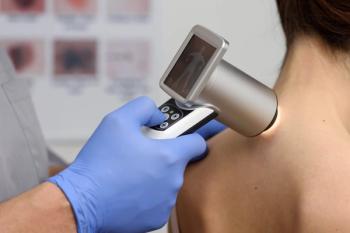
Dupixent Safe, Effective Over 52 Weeks in Adolescents With Moderate-to-Severe AD
A 52-week open-label extension study supported the long-term use of Dupixent to treat adolescents with moderate-to-severe atopic dermatitis.
A full year of treatment with Dupixent (dupilumab) had a similar safety profile as the short 16-week study in adolescents with moderate-to-severe atopic dermatitis (AD). The majority of patients had to increase their dose from every 4 weeks to every 2 weeks, and almost half who stopped treatment due to their skin clearing up needed to restart treatment because their AD returned.
The findings were reported as part of the phase 3 LIBERTY AD PED-OLE, a 52-week open-label extension (OLE) trial. The results were
“A substantial proportion of adolescents have persistent disease, and patients with higher severity of disease have been shown to have lower rates of remission,” the authors explained. “Until recently, adolescents with AD inadequately controlled by topical therapies had limited treatment options.”
Dupixent targets interleukin 4 and 13, which are key drivers of AD. Dupixent is already approved for patients with AD, asthma, and chronic rhinosinusitis with nasal polyps. The LIBERT AD PED-OLE study evaluated adolescents with moderate-to-severe AD who had participated in Dupixent trials previously. While the results presented are for patients between the ages of 12 and 18 years, the study has enrolled patients 6 months and older.
Originally, patients received Dupixent based on weight as a 2 or 4 mg/kg dose every week; however, after phase 2 data for a different study, patients were switched to Dupixent 300 mg every 4 weeks. Patients who had an inadequate response to 300 mg every 4 weeks at week 16 or 16 weeks after switching from 2 or 4 mg/kg every week could be switched to Dupixent 200 or 300 mg every 2 weeks, based on weight. After being uptitrated, patients remained on the regime for the remainder of the study.
A total of 294 patients were analyzed for the study. At the time of data cut off, 34.7% had completed the 52 weeks and 14.6% had discontinued the study prematurely. At the beginning of the study, 47.3% had an Investigator’s Global Assessment (IGS) score of 3 and 24.8% had a score of IGA 4—with a score of 0 or 1 representing clear or almost clear skin. The authors noted that the IGA scores were likely a result of treatment interruption between the parent study and the OLE study, as well as the inclusion of patients who had been on placebo in the LIBERTY AD ADOL study.
Most patients (73.8%) reported one or more treatment-emergent adverse event (TEAE), which were mostly mild or moderate. Of the 1131 TEAEs reported, only 120 were considered to be related to treatment, 12 were considered severe, and five serious. The most frequent TEAEs were nasopharyngitis, AD, upper respiratory tract infection, and headache.
By the end of the OLE, 42.7% of patients had an IGA of 0/1 and 86.4% had at least mild disease (IGA ≤2). By week 52, 93.1% of patients had a 50% improvement in Eczema Area and Severity Index, 81.2% had a 75% improvement, and 56.4% had a 90% improvement.
Throughout the OLE, 70.9% required uptitration. By the end of the study, 29.4% of patients had clear or almost clear skin that was sustained over 12 weeks and 56.7% of them experienced a relapse and were re-initiated on treatment. Nearly all (90.9%) of the patients who re-initiated the treatment and had another IGA performed had regained IGA 0/1.
“These results support the long-term continuous use of dupilumab in this patient population,” the authors concluded.
Newsletter
Get the latest industry news, event updates, and more from Managed healthcare Executive.






















































